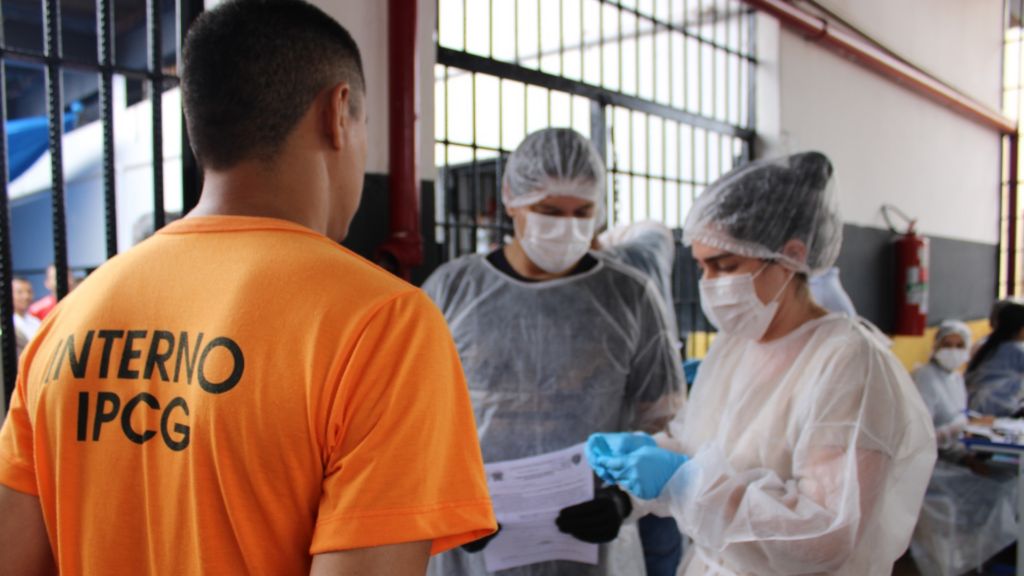If you usually watch police investigation films or series, you know that one of the most emblematic moments is when a trace is found at the scene of the crime. And just like in fiction, DNA at crime scenes or even in the search for missing people has already caused the police in Mato Grosso do Sul to declare “cases closed” more than a decade ago.
DNA has been used to help solve crimes since the 1980s, when the English police managed to produce evidence against a postman named Colin Pitchfork, in the county of Leicester, England, putting an end to the tragic case of rape and murder of two teenagers. Since then, DNA has been considered practically irrefutable evidence.
On DNA Day, celebrated on April 25, you will understand how the use of a person’s genetic profile in criminal cases was a fundamental milestone for forensic science.
Genetic Profile Bank in Brazil
In Brazil, this technology was implemented for the first time in 1994, by the Federal District, with the implementation of the country’s first forensic DNA laboratory. Today, Brazil has the RIBPG (Integrated Network of Genetic Profile Banks), established in 2013. All 26 states and the Federal District have forensic genetics laboratories in their official forensic institutions.
Through RIBPG, it is possible to maintain, share and compare genetic profiles, contributing to criminal investigations or procedural instructions obtained in different regions.
The work is carried out in a joint action between Public Security Secretariats, National Secretariat
Public Security and Federal Police for sharing genetic profiles obtained in Forensic Genetics laboratories.
In Mato Grosso do Sul, the Genetic Profiles Bank has existed since 2010.
Profile collection and identification
Criminal expert and director of IALF (Institute of Forensic Laboratory Analysis) Josemirtes Socorro explains that collections can only be made in criminal cases, after registering a police report.
Currently there are three types of collection: that carried out at the scene of the crime or on the victim; the collection made from family members to identify missing people; and the collection carried out on people convicted of heinous crimes.
The first type of collection involves collecting biological materials, such as strands of hair, blood or saliva at the scene of the crime, on the victim’s body or through examinations carried out on victims in the forensic medicine units of the Scientific Police.
“In this case, criminal experts go to the scene of the crime, it could be homicide, property crime, for example, or in cases where there are victims of sexual crimes, and collect these genetic materials. All traces that can identify the perpetrator of that crime are collected and sent to the laboratory. As soon as they arrive, we screen them and extract the DNA,” he explains.
After this process, the person’s genetic information is sent to the bank and becomes available for national consultations, allowing institutions across the country to cross-reference data.
Recognition of missing persons
The second type of collection is that in which genetic materials are extracted from family members of missing people. To do this, individuals must go to the laboratory with the incident report in hand. There, an expert will collect a genetic sample through the ‘swab’ test, which is nothing more than passing a flexible rod through the inside of the mouth.
“In collections made with family members of missing people, all genetic information goes to the database and is compared with found remains, with abandoned or burned bones, for example” explains the expert.
“This way we can check whether the person being looked for is one of the genetic profiles we have registered.”
Mato Grosso do Sul currently has 158 genetic profiles of unidentified remains and 133 genetic profiles of family members of missing people registered in the bank. According to Josemirtes, these samples also undergo tests with data from unidentified people, who do not know who they are and do not carry personal documents.
“There are cases of people who are admitted to hospitals, do not know who they are and do not have documents. When we are informed of this, if that person is not in our database, we collect a trace of them, include them and compare them with the data we already have. It may happen that that person has loved ones registered in our system, or in the national bank, and so we promote this reunion”.
Convicted of crimes
The third collection is now aimed at people convicted of serious and heinous crimes. Since 2012, it has been mandatory to identify the genetic profile of those convicted of crimes involving serious violence, such as homicides, robbery, kidnapping and rape, or in cases determined by the judge.
In this case, the genetic material is also collected through a ‘swab’ test, normally through joint efforts carried out within prisons across the state. In Mato Grosso do Sul, 2,903 genetic profiles are from people convicted of crimes.
The criminal expert explains that these collections allow for ‘state or national coincidence’.
“We had a case of national coincidence involving a sexual crime that took place in Paranaíba. A prison in the interior of São Paulo carried out a joint effort to collect genetic material. When they inserted it, it coincided with a trace that we here in the state had already registered with the bank. In other words, with this we learned that the man who had committed the crime in the interior of the state was in prison, but in São Paulo”, he points out.
This means that, with the genetic material collected and stored, it is possible to identify the perpetrator of unsolved crimes, prove the Innocence of suspects and even relate a given case to other investigations. According to Josemirtes, this year alone Mato Grosso do Sul recorded 4 state coincidences, all of them related to property crime.
Trace between trace
Trace-to-trace cases are those in which samples collected in different locations can relate different cases and identify the perpetrator of both crimes, as in cases of ‘serial killers’.
“This can point us to rapists, serial criminals… Because sometimes experts go to location ‘A’, collect the trace and record it in the bank. Then they go to another crime, in location ‘B’, record the traces and when they look, the same person committed both crimes”, he explains.
For the expert, there is no doubt. It is thanks to DNA collections and studies that today so many crimes can be solved, allowing victims’ families to respond.
“This technology certainly helps us a lot in investigations. During these times, there was a collection effort at the Maranhão prison, we pulled the system and saw that it matched a record we had here. We discovered that the author of the trace we registered and who was on the run from the Mato Grosso do Sul prison was in prison, but in another prison,” he says.
“So without a doubt it is this tool that allows us to contribute to police investigations and also to the judiciary. It’s an increasingly growing work”, he points out.

Difficulties
In Mato Grosso do Sul, the forensic and laboratory teams rely on cutting-edge technology. This allows data to be crossed quickly and the most diverse crimes to be clarified.
According to Josemirtes, the biggest difficulty currently is being able to provide a quick response to families with missing loved ones.
“We often need to extract genetic profiles from completely compromised traces and this ends up making the process difficult and even delaying the process a little. Sometimes families say that we are taking too long, but in reality, that is not the case. For example, if the only trace we have are charred bones, that genetic material was exposed to high temperatures and this degrades the DNA. Genetic extraction becomes much more difficult and there are cases that we cannot even manage, unfortunately. There are many external factors that can interfere,” he explains.
Case clarified
In 2021, the IALF and the Civil Police, through the Specialized Homicide Police Station, managed to clarify the disappearance of chef Antônio Ailton da Silva, aged 53, which occurred in February 2020.
During the National Campaign to Collect DNA from Relatives of Missing Persons, biological materials were collected from 62 family members and the information was cross-referenced with existing samples in the Genetic Profiles Bank of Mato Grosso do Sul.
“In all cases of corpse finds, IMOL forwards a sample to IALF, so that we can extract DNA from that sample and insert the genetic profile obtained in the Genetic Profile Bank, at state and national level”, explains the expert.
According to Josemirtes, two of the chef’s brothers attended the IALF during the campaign and provided genetic material. “When we entered the family members’ DNA into the Bank, there was confirmation of traces of a bone, with the genetic material of that victim’s family members”, he states.
The bone with a positive result was found on March 7, 2020, in a soybean field on the banks of BR-163, at the exit to São Paulo, in Campo Grande.
Tags: thousand registered genetic profiles DNA helping solve cases decade
--







